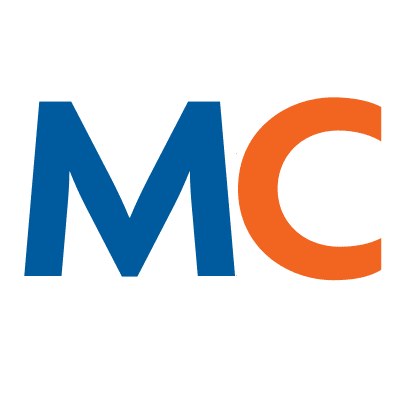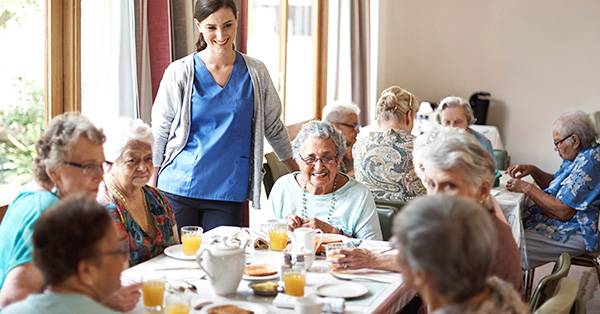- Solutions
- Solutions
- Home Health
- Hospice
- Life Plan Community
- Palliative Care
- Private Duty
- Senior Living
- Skilled Nursing
- Skilled Nursing
- Skilled Nursing Software
- Advanced Insights
- Customer relationship management
- Data and analytics
- Financial & operations management
- Marketing
- Nutrition management
- Referral management
- Regulatory compliance
- Retail management
- Resident engagement
- Revenue cycle management
- Skilled nursing interoperability
- Partners
- Blogs
- Resources
- About
- User Conference

What is skilled nursing care at home, and why should SNFs embrace it?
For the past decade, patient care has increasingly shifted to an at-home focus across the healthcare industry, a process that’s only been accelerated by the Covid-19 pandemic. And skilled nursing is no exception. But what is skilled nursing care at home from an operational standpoint, and why are so many organizations now embracing its benefits?
In my last article, I provided an overview of the reasons why so many skilled nursing organizations are choosing to diversify their service lines. From raising resident satisfaction to the chance to gain new reimbursement dollars, the incentives for providers to diversify are clear. And for most SNF leaders, the most sensible place to begin is with home health.
For those facilities that haven’t yet decided to integrate home health care services, here are a few compelling reasons for doing so. And next time, we’ll follow it up with a look at the three primary challenges that providers must overcome to achieve success as a home health provider (and the higher levels of patient satisfaction that can go along with it).
What is skilled nursing care at home, and what are the trends driving it?
So, what is skilled nursing care at home, and why have so many SNF organizations chosen to embrace it? As I discussed in Part 1 of this series, skilled nursing care at home is a term describing SNF services delivered in a home health context, or when SNF organizations deliberately offer new services to better serve their residents and communities.
Home health is a natural diversification opportunity to skilled nursing. In addition, there are quite a few external factors helping to drive this trend. Of these, the five most impactful are:
- Patient satisfaction and experience
- Bipartisan support from lawmakers and government officials
- The ability to complement and support value-based care models
- Promoting improved quality of care
- Technological advances that are improving feasibility and cost effectiveness
#1: Meeting the goal of greater patient satisfaction & experience
Because they’re in a familiar environment, seniors have a higher level of satisfaction and a better experience in the home setting. They also often have family support. And from an emotional and psychological standpoint, they have a more positive outlook. They’re just happier being at home.
This satisfaction helps encourage patient engagement with care, which helps improve rehabilitation or whatever care path they’re following. And that’s been shown to lead to better outcomes. When patients — especially seniors — are comfortable at home, they’re often more willing to be engaged with care.
Particularly for seniors, receiving care in the home is also more accommodating for a patient’s mental health. Rationally or not, some people have feelings of isolation and confinement at the very idea of entering a skilled nursing facility. SNF providers can use home care services to help overcome that hesitance.
Not everyone is like this, but enough people are to make it a point worth addressing. For instance, I have frequent discussions with my colleagues and peers about care for our aging parents. In almost every scenario, the preference is split. One spouse or couple is adamant about staying home, while others understand they are better off in a care center. Accommodating both types of people means emphasizing the ability to let them choose their own preferred settings.
#2: Bipartisan political activity & support
A greater capacity to treat patients in their homes also happens to be one of the few things that most lawmakers can agree on, at a bipartisan level. The reason for this is clear enough. The cost savings offered by at-home care are a powerful incentive for legislators looking to rein in health spending.
To that end, the government has already conducted a number of studies on cost savings for providing skilled nursing care at home versus within a facility. Finding significant savings in every case, many lawmakers and government officials are now 100% convinced that focusing on care at home is going to save a considerable amount of money in government spending.
And since this is one area where all parties agree, there’s a high likelihood of things actually continuing to move forward. Take the U.S. House of Representatives’ recent vote on H.R. 4040 to extend telehealth allowances for at-home care past the Covid-19 public health emergency (PHE).
More significant is the Choose Home Care Act of 2021, which was introduced by a bipartisan team of senators in 2021 and is still moving its way through the U.S. Congress. Designed to create an add-on payment to the traditional Medicare home health benefit for patients 30 days after hospital, the bill is another powerful incentive for people to receive care at home.
There’s other similar legislation out there, too. For instance, the American Rescue Plan seeks to enhance and expand and strengthen the home setting within community-based services for people with Medicaid. Whichever of these bills becomes law, it’s clear that lawmakers are pursuing the goal of at-home care on a larger scale than currently exists.
#3: A new way to achieve value-based care
It’s no coincidence that this push for increased at-home care by the government complements the stated goals of the value-based care models championed by the Centers for Medicare & Medicaid Services (CMS).
For years now, these models have increasingly based reimbursement for providers not just on quality of patient care, but how well they’re able to integrate that care in a way that lowers overall spending. And a great way to do that is to empower patients or residents to recover at home at a lower cost than with in-facility treatment.
So, offering skilled nursing care at home gives providers the chance to see greater reimbursement from payers. The key is to be able to deliver that quality care while proving that the quality outcomes are coming in under cost. The better the provider gets at delivering quality care under cost, the more profit they’ll eventually earn under value-based care plans.
#4: New power to improve quality of care
Improving the quality of a specific instance of patient care also gives providers the ability to raise their overall care standards. And at a time when every nursing home provider is scrutinized at some level by what CMS has called quality measures, this can be a powerful tool for organizations looking to stay competitive.
By assigning a score based on a variety of different metrics related to how the business is run and care is delivered, these quality measures can be a key component to a skilled nursing organization’s future. Higher ratings mean more opportunities, and more referrals. They can boost an organization’s competitive advantage, as well as ensure ongoing viability.
And by extending services into the home, workers within a skilled nursing organization gain new skills and experience that can foster even higher quality of care. Many higher-quality providers have already figured this out. And since not all organizations have yet embraced it, the ones that have could realize a valuable source of extra revenue.
#5: New forms and uses of technology
Advancements in technology have ultimately made all of this not only possible, but feasible. There are many elements at play here, including the advent of smart homes, remote patient monitoring platforms, innovative and patient-friendly medical devices, and the accessibility of patient health data via HIPAA-protected processes.
Today, virtually everyone has a computer at home, and even most seniors have access to mobile devices. That gives basically everyone a basis to engage with the telehealth technology that underlies so much of at-home care.
And even better, this technology is continuing to advance in ways that offer even richer benefits to providers and patients alike. Take MatrixCare, for example. The MatrixCare platform not only seamlessly records and tracks vital signs and other important information, but also triggers alerts if any of that data is erratic or out of range.
But for all of this to work, the technology has to be accessible and simple to use. Not only the patient but also their family must be able to easily engage with the technology. With the integration of innovations like app-based interfaces and text-based messaging, though, the technology for at-home care has become more feasible than ever before.
All the same, some serious challenges still remain for providers seeking to shift to skilled nursing care at home. I’ll explore those challenges in detail in the next part of this series, and offer some suggested solutions, as well.
Is your organization interested in offering skilled nursing care at-home services? Request a demo today to see how MatrixCare can help.
See what MatrixCare can do for you
Kevin Whitehurst
Kevin Keith Whitehurst, Senior Vice President, Skilled Nursing Solutions, has been a key player in LTPAC technology since 1990. Whitehurst has held many leadership positions including IT Director for one of the first developers of MDS software systems to, most recently, SVP, Client Services for MatrixCare. In his current role, he is responsible for the success of the Skilled Nursing Solutions Group and oversees Product Management, Professional Services, Sales and Marketing, and Client Support for that group. A 26 year veteran, Whitehurst has dedicated his career to improving Skilled Nursing Providers experience with technology. Whitehurst holds degrees from San Bernardino Valley College and the Los Angeles School of Business and also served in the U.S Air Force.
Related Posts


See MatrixCare in action
Start by having a call with one of our experts to see our platform in action.
MatrixCare offers industry-leading software solutions. Thousands of facility-based and home-based care organizations trust us to help them improve efficiency and provide exceptional care.
© 2025 MatrixCare is a registered trademark of MatrixCare. All rights reserved.






